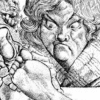
Irish
Who Was Nuada in Irish Mythology?
Who Was Nuada in Irish Mythology?
Nuada was the first High King of Ireland who lost a hand leading the Tuatha Dé Dannan to the Emerald Isle.
According to Irish legend, Nuada, sometimes given the modern spelling Nuadha, was the first king of the Tuatha Dé Dannan.
These mythological figures were both supernatural beings and the founders of Irish culture. They came to Ireland from the north and fought both prior inhabitants and invaders to win control of the island.
Nuada brought his people to Ireland but did not hold the throne for long after they arrived. Having lost a hand in battle, he was no longer physically perfect and thus could not be their king.
Nuada gave the throne to Bres, a half-Fomorian whose rule saw the Tuatha Dé Dannan lose power to the hateful Fomorians. With a silver hand he took back his throne and restored his people to power.
Nuada would again give up his throne to a half-Fomorian. This time, however, it was Lugh and the great hero led the Tuatha Dé Dannan to a final victory over their enemies.
The story of the first High King of Ireland combines history and the supernatural to explain how Celtic culture came to dominate Ireland. The character of Nuada, however, came from outside of Ireland both in his story and his development.
Silver-Handed King Nuada
According to legend, Nuada was king of the Tuatha Dé Dannan before they came to Ireland.
A skilled hunter and fighter, Nuada led his people into Ireland from the north. He set up the court at Tara and ruled the Tuatha Dé Dannan justly.
The Tuatha Dé Dannan were not the only inhabitants of Ireland, however. The Fir Bolg controlled the island when they arrived and the hostile Fomorians were nearby.
Nuada went to the king of the Fir Bolg and asked for half of the island. The Fir Bolg refused this demand, so the two groups went to war.
The Fir Bold and the Tuatha Dé Dannan fought fairly, each side even allowing the other to inspect their weapons before the fighting began. The Battle of Magh Tuiredh, however, was still a bloody and violent event.
Nuada squared off against the Fir Bolg champion, Sreng. The king of the Tuatha Dé Dannan lost his arm in the fight.
Although he had to be taken off the field by fifty men, Nuada was not ready to stop fighting. He offered to fight Sreng in single combat on the condition that the Fir Bolg leader bound one of his arms to make an even match, but Sreng refused.
By this point, however, the Fir Bolg were nearly defeated. Although their king had been wounded, the Tuatha Dé Dannan were victorious.
Rather than sharing the island equally, Nuada allowed the Fir Bolg to keep only a quarter of it. Sreng chose Connacht, leaving the rest of Ireland to the Tuatha Dé Dannan.
The new rulers, however, needed a king. Although Nuada had led them well, their laws said that a king had to be physically perfect so Nuada’s lost arm made him unfit to hold Tara.
Nuada had no children, so he named Bres as his heir. Nuada stepped down, making his home at Brú na Bóinne.
Bres, however, was a poor choice to be king. His father was one of the Fomorians and he soon gave preferential treatment to them.
The Fomorians were usually described as monstrous, hostile creatures. Bres allowed them to gain more and more control over Ireland until they almost entirely subjugated the Tuatha Dé Dannan.
The Tuatha Dé Dannan resented this rule and grew to hate Bres. Two of them, the physician Dian Cecht and the smith Creidhne, began to work toward restoring Nuada to power.
They made a silver hand for their former king to replace the one he had lost in battle. Through their magic and inventiveness, the hand was fully functional.
Because of this, Nuada was given the epithet Airgetlám, Silver-Hand. Dian Cecht’s son Miach eventually replaced the silver arm with one of flesh and bone, but the silver arm was enough to make Nuada eligible for kingship again.
After seven years of disastrous rule, the Tuatha Dé Dannan removed Bres from the throne. Nuada reclaimed his place as the High King of Ireland. He ruled for another twenty years.
Bres did not forgive the coup, however. He went to his father to ask for help in regaining his throne.
This request was denied, but Bres was not entirely ignored by the Fomorians. Balor of the Evil Eye agreed to help him and gathered a Fomorian army to conquer all of Ireland.
As the war loomed, another half-Fomorian came to join the Tuatha Dé Dannan. Unlike Bres, Lugh was loyal to Nuada’s people and had many valuable skills.
Recognizing Lugh’s value, Nuada let the newcomer lead the Tuatha Dé Dannan in battle. At the Second Battle of Magh Tuiredh, Lugh led them to victory against the Fomorian invasion.
Nuada, however, would not see the victory. He was killed in the battle and Lugh took his place as High King after his death.
My Modern Interpretation
The Tuatha Dé Dannan are often described as the ancestors of the Irish people. While they had supernatural abilities and long lifespans, they lived and died as humans instead of immortal gods.
Some historians believe that this ancestral identification may be somewhat literal. While mythological elements were added over time, they think that the stories of the Tuatha Dé Dannan are rooted in ancient history.
In this interpretation, Tuada was the king who led his people to Ireland. There they encountered indigenous people, the Fir Bolg in mythology, and fought until they controlled the majority of the island.
Archaeological evidence proves that many waves of people entered Ireland over thousands of years. The Hill of Tara, where the Tuatha Dé Dannan were said to hold court, was the site of Iron Age forts but contained much older tombs.
Nuada’s story may be rooted in one of these Iron Age kings who brought the Celtic people to Ireland from continental Europe.
If the Fir Bolg were the pre-Iron Age inhabitants of Ireland, the Fomorians represented a later wave of invasion. In fact, the Christian monks who recorded the stories made them raiders from the sea that were similar to the Norse Vikings who attacked in their own time.
Nuada’s story cannot be taken as entirely historical, however. His battles and features have many similarities to other European myths.
The ancient people of Britain worshipped a hunting god named Nodens, whose name was a cognate of Nuada. Some historians also compare both figures to the Norse god Njord, making it possible that the figure was a Germanic archetype.
Nuada’s most identifying feature, his silver hand, is also a mythological feature rather than a historic one. The Norse god Tyr and the Welsh Lludd Llaw Eriant, Llud of the Silver Hand, were both one-handed rulers.
Lludd Llaw Eriant was a hero, not a god, who ruled over Britain according to legend. An earlier form of his name was Nudd Llaw Eriant, linking the names of the Irish, Welsh, and British figures.
Given the evidence, it’s likely that Nuada’s story combines the history of Ireland and the religion of the Celtic people. Nuada’s invasion of Ireland and its defense may be rooted in history, but the first High King of Ireland was a god who predated Celtic arrival on the island.
In Summary
In Irish legend, Nuada was the first king of the Tuatha Dé Dannan. He brought his people to Ireland and fought the native Fir Bolg for control of the island.
In this fight, Nuada lost a hand. Being physically imperfect he was no longer eligible for kingship, so he abdicated in favor of the half-Fomorian Bres.
Bres allowed the Fomorians to take control of Ireland. The Tuatha Dé Dannan crafted a silver hand for Nuada so he could reclaim his place as king.
Nuada held the throne for another twenty years until Bres returned with a Fomorian army to take power by force. Lugh led the Tuatha Dé Dannan to victory in the battle that secured their power and took the throne after Nuada was killed in battle.
The Tuatha Dé Dannan are often interpreted as a representation of the first Celtic invaders of Ireland. The Fir Bolg were earlier inhabitants, while the Fomorians were subsequent invaders who sought to claim the island as well.
Nuada may be partially rooted in this history, but he also clearly originated from Germanic religion before it was brought to Ireland. Similar figures in Britain, Wales, and Scandinavia show that Nuada’s arrival from outside of Ireland is both factual and legendary.









